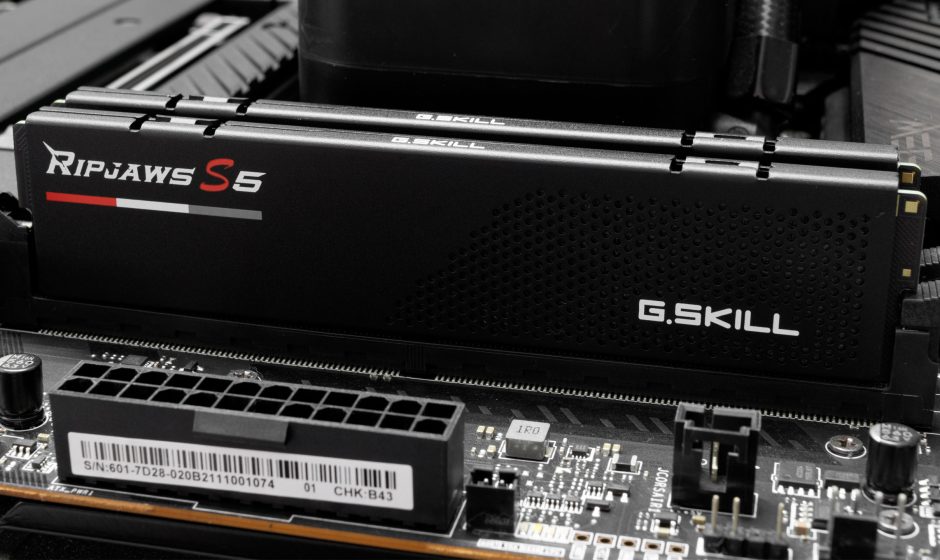Faulty RAM can cause a host of issues and headaches. Here are 3 simple ways to check if your RAM has gone bad.
Once you have enough RAM in your PC, you don’t usually give it a second thought. Unlike your CPU and GPU, where you might be concerned about lowering the temperature or optimizing fan curves, RAM doesn’t typically need much looking after. But, if you start experiencing weird slowdowns or crashes, and you’ve eliminated everything else as the culprit, you might have a bad case of faulty RAM.
While it’s rare, even the best RAM can fail, given enough time. Sometimes, you may encounter faults with a totally new memory kit. Although you can’t prevent these situations, you can check your RAM for errors by using several built-in and third-party tools on Windows. By doing this, you can confirm (or rule out) that you have a faulty DIMM and can go about buying a new kit.
Signs of faulty RAM
Some telltale signs that something is wrong
This part can be tricky. For instance, diagnosing issues with your GPU is much easier than concluding that your RAM is faulty. This is because there aren’t many telltale signs unique to bad memory. However, you can still look out for the following signs to get an indication that your memory is going bad (no pun intended):
- Multiple beeps followed by failure to boot into Windows
- The system slows down the longer it’s running
- Blue screen of death
- Random system restarts
- RAM specs in Windows show less RAM than actually installed
These symptoms can indicate any number of faulty components — from storage drives and graphics cards to a corrupted Windows installation. This is why it’s important to eliminate other causes before suspecting your RAM. Once you’re fairly confident that the rest of your system is free from faults, you can use multiple methods to confirm whether your RAM has developed errors.
Make sure your RAM is installed correctly
Check this first before running tests
Sometimes, incorrectly installed RAM can throw errors. For instance, if you don’t apply enough pressure when installing a DIMM, it may not be detected at all.
- Turn off your computer and open your PC case.
- Ensure you’ve correctly installed the RAM modules on the motherboard.
- Once you’re confident, close the case and restart your computer.
- If you continue to face errors, proceed to the methods below.
Check RAM errors with Windows Memory Diagnostic
Use the built-in tool first
Windows Memory Diagnostic is a built-in tool in Windows that helps you check your RAM for errors by running a few tests. It’s the quickest method to check your RAM for errors, but it isn’t the most exhaustive one. If you don’t find any errors after running it, proceeding to the other tests is still recommended. It’s still helpful as a preliminary test, and if you get a positive, then there’s no need to opt for any other method.
- Search for “memory diagnostic” in the Windows search bar and click Windows Memory Diagnostic.
- Click Restart now and check for problems (recommended) to restart your computer and initiate the test.
- Your computer will reboot into the Memory Diagnostic tool and begin the test automatically.
- You can press F1 if you want to choose between Basic, Standard, and Extended tests.
- Once the test is completed, your PC will boot into Windows and show you the test results.
- If the results don’t appear on their own, right-click the Windows button on the taskbar and click Event Viewer.
- Under Windows Logs > System, click Find on the right pane, search for MemoryDiagnostic, and press Enter.
- You’ll automatically see the latest Memory Diagnostic test details displayed on the screen.
If the test displayed no errors, you should still give the other methods a go.
Check RAM errors with HCI MemTest
Getting into serious diagnostics
HCI MemTest is a much more rigorous memory-testing tool that can take around an hour or so for one pass, depending on your RAM and processor. The ideal way to use HCI MemTest is to open one instance for each processor thread you have. For example, if you have an 8-core, 16-thread processor, you’ll need to open 16 instances of the tool simultaneously. Let’s break down the process below:
- Download the free version of HCI MemTest, extract it, and launch it. The paid versions automate a lot of the following steps if you’re interested.
- In the box below Enter megabytes of RAM to test, you’ll need to enter the amount of memory to be tested per instance. For this, divide the amount of free memory you currently have (in Task Manager) by the number of CPU threads you have. In my case, around 16GB of free memory and 12 CPU threads amounted to around 1,365 megabytes per instance. Enter the amount in your case and press Start Testing.
- Open additional instances of HCI MemTest to account for your remaining CPU threads and let all the tests run till completion.
- In most cases, one or two passes are sufficient to uncover memory errors. If you don’t find any errors after two passes, you can safely conclude that your RAM is error-free.
HCI MemTest should be enough as a memory diagnostic tool unless you can’t boot into Windows or any other operating system. For that, check out the next method.
Check RAM errors with MemTest86
Bootable memory testing tool
MemTest86 is an old but great memory-testing tool from PassMark. It doesn’t need an operating system to run and can be used when you cannot boot to the desktop or simply want to run the diagnostics outside of the OS.
- Download the free version of MemTest86 for all systems with UEFI BIOS. If you have an older, legacy BIOS, you’ll need to scroll down and download the V4 version next to Image for creating bootable USB Drive.
- Extract the file and launch imageUSB.exe. Insert a USB drive for the image creation process, and select it in Step 1.
- Select Write image to USB drive in Step 2, select the location of the memtest86-usb file in Step 3, and click Write in Step 4 to create the bootable image.
- Once complete, restart your computer, ensure the USB drive is set as the primary boot device in the BIOS, and then boot using the USB drive.
- MemTest will automatically start the testing if you don’t press anything for 10 seconds. Let the test complete and wait for the results.
- The results of the test will show whether there are any faults in your RAM.
The paid version of MemTest86 also tells you the exact DIMM or DIMMs having errors, saving you the time to eliminate and figure it out for yourself. But if you’re using the free version, the next section will help you do this.
Figure out the faulty DIMM
Get to the root of the problem
Say you’ve found errors on your RAM using any free-to-use methods above. Logically, the next step is to find out which DIMM (hopefully just one) actually has faults so you can replace it. You can do this by a simple process of elimination.
- Turn off your computer and leave just one DIMM installed. Run HCI MemTest and see if it spots any errors.
- Do this for each of your DIMMs to determine which is faulty.
Source: Amazon
- You can also install the DIMMs in different slots and see if MemTest spots errors in case of a particular slot. This way, you’ll know if the motherboard slot, and not the DIMM, is the problem.
Replacing your RAM should be fairly simple as long as you buy an identical DIMM to avoid any stability and performance issues. The ideal fix is to buy a completely new memory kit, but I’d recommend replacing just the faulty DIMM first to save money.
Preventing problems with faulty RAM
Although RAM, like any other component, can fail for several reasons, there are still steps you can take to ensure you don’t add to the variables. You can stop your computer from overheating so your RAM modules aren’t suffering due to a lack of airflow. Avoid overclocking your RAM if it doesn’t yield any significant performance improvements. You can instead use the XMP or EXPO profiles in the BIOS.




